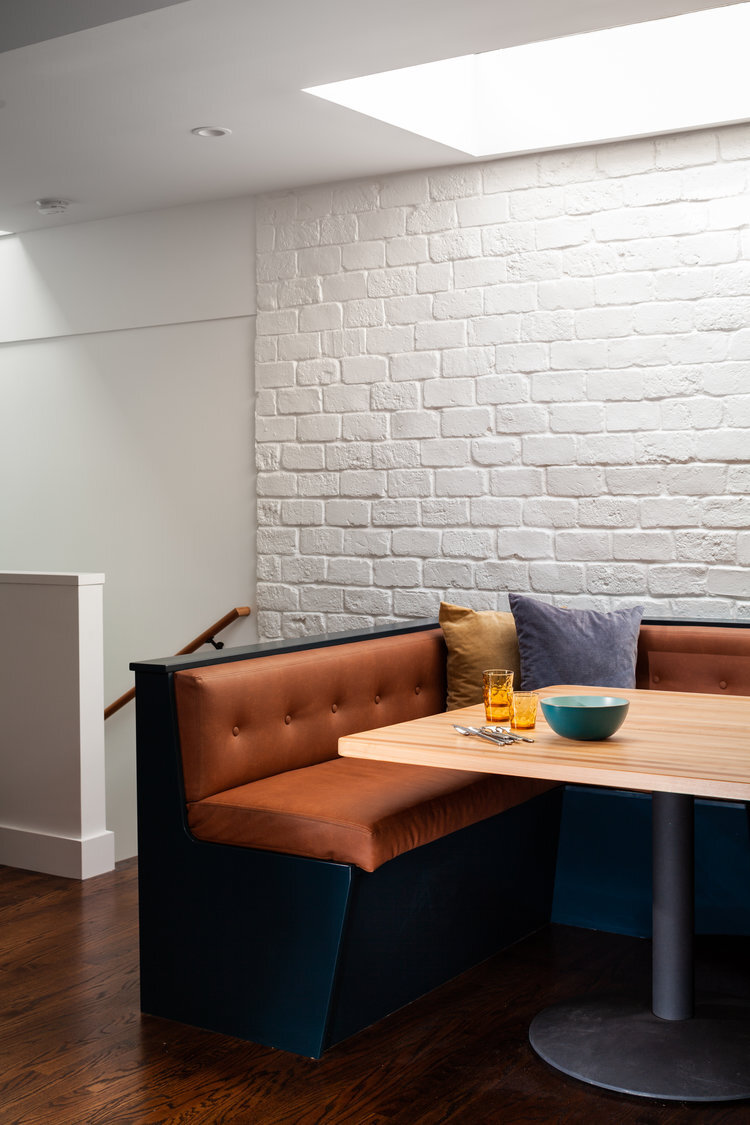Architectural Style Series: Mid-Century Modern
It’s simple. It’s elegant. It’s minimal. Mid-century modern design has seen a massive resurgence in the past decade, so we dove into the history, highlighted some of Craig’s projects and talked about why this Mad Men-inspired look has seen such a comeback. Old-fashioned not included.
Craig did a top-to-bottom remodel on this 1950s home in Fairfax, CA. Remodeled in the 1980s, he brought it back to a more minimalist mid-century modern design. photo: David Duncan Livingston
In the age of COVID and working from home, minimalism and Marie Kondo, homeowners are ditching clutter for a more streamlined look.
“It’s one of my favorite styles,” says Craig. “It’s super popular because it’s got an indoor-outdoor connection, it’s pared-down, and interiors are very streamlined.” Craig has worked on numerous mid-century modern projects over the past decade, and admits it’s easier to design and build.
“It’s a movement that happened around World War II,” he says. “What I found interesting was that a lot of European architects were fleeing Nazi Germany and came over here, which had a big influence on mid-century modern design in the US.”
Depending on research, this style originated and came into popularity in between 1933-1965. In the ‘40s and ‘50s, Joseph Eichler buildings were sprouting up like weeds (the home developer who made this style popular), and Frank Lloyd Wright became one of the most well-known architects of his time.
The iconic Eichler Summit building in downtown San Francisco. Craig re-designed two luxury apartments in the building.
Craig’s sketch for the remodel to a 1,000 square foot apartment in the Eichler Summit building.
Efficient & Affordable Design
When the mid-century modern style became popular, Eichler homes were popping up everywhere in places like Palo Alto, Sunnyvale and San Rafael. Easy to build with affordable materials, Eichler knew what he was doing and was a smart business man to boot.
“At the time, it was only about $300 down to build.” says Craig. Eichler wanted to create more modern, better-quality homes at the time, and did so with success.
“Mid-Century modern buildings have a lot of exposed structure, with visible beams and posts. You can see how the house is held up,” says Craig.
The price tag may have gone up since then, but people still can’t get enough of the modern, spacious, minimalist look, especially when so many are working from home and have multi-uses for different spaces. People want less, or at least make it look that way in their homes.
In the ‘50s, ‘energy saving’ wasn’t in the zeitgeist but now codes are put in place to make everything more efficient. So, architects like Craig are re-vamping this mid-century style to make it adaptable to modern times.
“In 2021 in California, we have energy codes that continue to evolve and require homes to be more energy efficient. And of course, I want to create designs that are as energy efficient as possible. With expansive glass and exposed roof framing details, mid-century-esque design needs to have high-performance glazing, foam insulation, and be aware of solar gain in all seasons,” says Craig. “Lastly, using solar panels, wind, and other means to generate energy from the site can and should be utilized.”
A popular mid-century modern touch, (the built-in banquette) is used as the kitchen table for a Pacific Heights Victorian remodel Craig designed a few years ago. Photo: Helynn Ospina
Fairfax 1950s Ranch Home with mid-century modern kitchen, details and furnishings. Photo: David Duncan Livingston
Wood grain furniture, built-ins, old-growth teak and black walnut were/are among popular building materials for this design. Photo: David Duncan Livingston
Fairfax remodel with sleek mid-century modern design touches represented in the bed frame, side table, and wooden dresser. (And of course, the yoga mat provides a 21st century touch). Photo: David Duncan Livingston
“The lifestyle of the era was less.”
Built-in furniture was a way to save space and create more ease, and Craig says Frank Lloyd Wright was famous for this integration of custom furniture pieces ‘built into’ and planned for within a functional space. These would be distinct areas for reading, writing or listening to music.
“In the 1950s, people just didn’t have as much stuff as we do now — the lifestyle of the era was less,” says Craig. “The kitchens were more pared down and clean and you didn’t need as much cabinetry. I think we went through decades later of exploding into having all kinds of material things and needing bigger closets. Fast forward to now, a lot of people are trying to figure out how to pare down, minimize and reduce clutter in their homes and lives, create indoor/outdoor spaces and do it with style; hence the resurgence of the mid-century modern design.”
Frank Lloyd Wright’s masterpiece, the iconic Fallingwater was built in 1935 in Western Pennsylvania.








